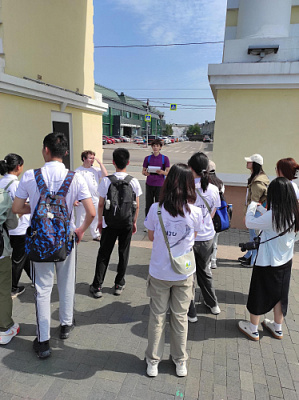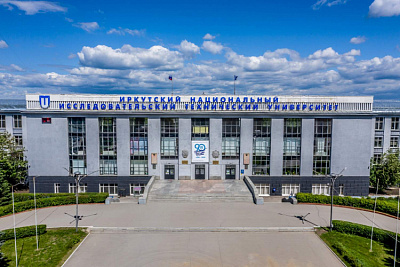INRTU graduate Georgiy Mikhailovsky developed a 3D model of the shoulder joint commissioned by the Irkutsk Scientific Center of Surgery and Traumatology
Georgiy Mikhailovsky, a graduate of INRTU, created a 3D model of the shoulder joint based on the results of computer tomography. The work was completed as part of his master's thesis commissioned by the Irkutsk Scientific Center of Surgery and Traumatology.
Georgiy graduated with honors from the Master's program in the Department of Materials Science, Welding and Additive Technologies. His supervisor is the head of the department, Andrey Balanovsky.
3D printing technologies are widely used in foreign medical centers, and this area is also actively developing in Russian medical facilities. 3D printing is used to create medical instruments, orthopedic products and unique anatomical models.
According to Georgiy Mikhailovsky, INRTU’s 3D model of the shoulder joint was used as a reference for preoperative planning:

“Medical workers provided us with the results of a CT scan of the patient from which I created an almost exact copy of this part of the body. Such models allow doctors to better plan the course of the operation or even cure the patient without surgery.”
Georgiy added that the process of creating exact copies of organs and parts of the skeleton is time-labor-consuming. First, visualization and segmentation of the desired areas should be developed in a special software product. Then, this part needs to be edited, printed, and post-processed. Post-processing includes cleaning, curing, and UV exposure.
Before the production of the shoulder joint, the graduate made several test samples of anatomical models. Based on the results of CT scans of real patients, he developed the femur, jaw, and lower part of the spine.
The experiments helped Georgiy to practice, choose the right equipment and materials for a custom sample, and set up technological parameters. Representatives of the Irkutsk Scientific Center for Surgery and Traumatology highly appreciated the work, noting the similarity of the model with a real shoulder joint.
“The introduction of 3D printing technology in the medical field is very promising. In the future, we intend to develop cooperation with medical facilities in our region. Such details may excite the curiosity of representatives of medical colleges and universities. Welding production is a key area of our department. However, I was interested in working in a new field and improving my 3D printing skills,” said Georgiy.Georgiy Mikhailovsky intends to continue his postgraduate studies at the Irkutsk National Research Technical University. He will work on the modification of polymeric materials at the next stage of higher education.
Recently, Georgiy became the winner of the INRTU’s Future Teacher competition. The competition is held within the implementation of the program of the development of human resources among master and postgraduate students at INRTU.







